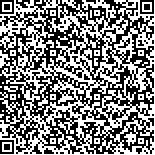| 引用本文: | 刘仁伟,薛彦卓,刘旸,林晓杰.受限水域中船舶自动避碰模型及应用[J].哈尔滨工业大学学报,2018,50(3):171.DOI:10.11918/j.issn.0367-6234.201609064 |
| LIU Renwei,XUE Yanzhuo,LIU Yang,LIN Xiaojie.Numerical model of ship automatic collision avoidance and the application in restricted water areas[J].Journal of Harbin Institute of Technology,2018,50(3):171.DOI:10.11918/j.issn.0367-6234.201609064 |
|
| 摘要: |
| 为解决船舶自动避碰问题,应用碍航物的领域概念以及结合动界理论,建立静态碍航物的领域模型和船舶动态领域模型, 由领域模型推导相应的船舶碰撞危险度量化模型,并得到考虑浅底、岸壁、风和流等综合环境下的船舶碰撞危险度量化模型.以本船为观察点,将静态碍航物和动态目标的碰撞危险、本船的操作性能以及当前的环境等因素综合考虑与评价,同时将势场理论与船舶避碰领域理论、船舶动界理论相结合,建立受限水域中的船舶自动避碰模型.通过船舶避碰航行仿真实例验证,结果表明:建立的船舶自动避碰模型能够较好地支持受限水域中船舶的安全航行,各领域模型尺寸参数选取适合,解决了传统势场模型的几个局限性问题.
|
| 关键词: 船舶领域理论 碰撞危险度 受限水域 量化 自动避碰 |
| DOI:10.11918/j.issn.0367-6234.201609064 |
| 分类号:U675.79 |
| 文献标识码:A |
| 基金项目:国家自然科学基金(51309064) |
|
| Numerical model of ship automatic collision avoidance and the application in restricted water areas |
|
LIU Renwei,XUE Yanzhuo,LIU Yang,LIN Xiaojie
|
|
(School of Ship Engineering,Harbin Engineering University, Harbin 150001, China)
|
| Abstract: |
| To avoid the ship collision automatically, the domain concept of navigation obstruction and the theory of dynamic boundary are employed to establish the ship domain model and dynamic static obstacles model. Then, the ship collision risk quantification model is deduced by considering the factors of shallow bottom, quay, wind and current. Observing from the ship, the ship automatic collision avoidance in restricted waters is modeled based on the operating performance of the ship and the collision risk of the static obstacles and dynamic target, and the current environmental factors, and combining the potential field theory and the theory of ship collision avoidance, ship domain bound theory. Numerical simulation results show that the ship controlled by the automatic collision avoidance model could sail safely in restricted waters regions, and the limitations of traditional potential field model were solved.
|
| Key words: ship domain theory ship collision risk restricted waters quantification ship automatic collision avoidance |






